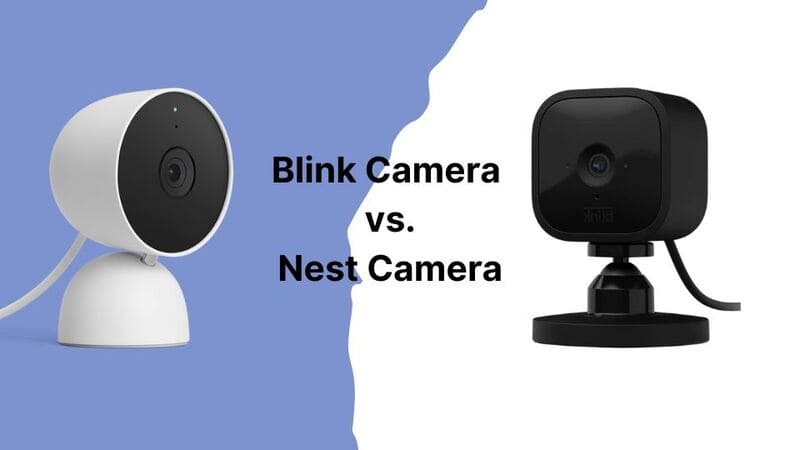Understanding the Security Camera Factory production process is essential for businesses looking to invest in high-quality surveillance solutions.
This article provides insights into each stage of manufacturing at a Security Camera Factory, from design and engineering to packaging and distribution.
Our expertise ensures you receive valuable information, empowering you to make informed decisions when selecting a security camera partner. By the end of this article, you’ll be equipped with the knowledge needed to navigate the complexities of the industry.
Explore the stages from design and engineering to packaging and distribution, as well as future trends in security camera manufacturing.
Security Camera Factory Design and Engineering
1. Concept Development
The assembly line process in a Security Camera Factory is a well-coordinated sequence of steps designed to efficiently construct high-quality cameras. The process begins with PCB assembly, where printed circuit boards (PCBs) are populated with electronic components. This step is crucial for camera functionality, as PCBs house the circuitry that controls various camera functions. Advanced machinery and techniques, such as surface-mount technology (SMT), are employed to ensure precision and reliability.

2. Prototyping
In a Surveillance Camera Factory, camera body construction involves assembling the housing, mounts, and protective casings. Factories use durable materials such as metal and high-grade plastics to ensure the camera’s longevity and resistance to environmental factors. The assembly process also considers ergonomic design to facilitate easy installation and maintenance.
3. Testing and Refinement
After prototyping, rigorous testing ensures that each camera meets the highest standards of quality and reliability. The Security Camera Factory conducts a battery of tests to check for durability, performance, and compliance with industry regulations. These tests include exposure to extreme temperatures, humidity, and even physical impacts to ensure the camera can endure tough conditions. Additionally, specialized tests like electromagnetic interference (EMI) assessments ensure that the camera won’t be affected by nearby electronic devices. This thorough testing process is essential for delivering a product that not only meets but exceeds industry standards, offering peace of mind to both the manufacturer and the end-user.
Component Sourcing in a Security Camera Factory
1. Key Components
In any Security Camera Factory, sourcing the right components is paramount to producing high-quality products. The lenses are the eyes of the camera, crucial for capturing clear, detailed images. High-grade glass and precise engineering ensure sharpness and accuracy. Next up, the sensors. These are vital for converting light into electronic signals, impacting everything from resolution to low-light performance. A top-tier sensor means your camera can handle various lighting conditions with ease. And don’t forget the circuit boards. These are the brains of the operation, coordinating all the camera’s functions. Quality circuit boards ensure reliable and efficient performance.
2. Quality Control
Quality control is a non-negotiable aspect of component sourcing in a Security Camera Factory. Each component undergoes rigorous testing to meet stringent standards. For instance, lenses are inspected for clarity and consistency, while sensors are tested for responsiveness and accuracy. Circuit boards go through stress tests to ensure they can handle real-world conditions. These quality control measures guarantee that every camera that leaves the factory performs reliably, reducing the risk of malfunction and ensuring customer satisfaction.
3. Supplier Relationships
Building and maintaining strong relationships with suppliers is key to a CCTV Camera Factory’s success. Factories work closely with suppliers to ensure a steady flow of high-quality components. These suppliers must meet various certifications and standards, such as ISO 9001 for quality management systems. By fostering these relationships, factories can negotiate better prices, ensure timely deliveries, and maintain consistent component quality. This collaboration also allows for quick adjustments in case of supply chain disruptions, ensuring the production line never halts.
Assembly Line Process at a Security Camera Factory
1. PCB Assembly in Security Camera Factories
In a Security Camera Factory, the assembly line begins with PCB (Printed Circuit Board) assembly. Bare PCBs are precisely populated with components like resistors and microcontrollers using automated SMT (Surface Mount Technology) machines. Reflow ovens solder these components, while quality control checks, such as visual inspections and automated optical inspections (AOI), ensure functionality. Precision is critical, as even a single misplaced component can affect performance.
2. Camera Body Construction at a Security Camera Factory
Next up is the Camera Body Construction. This part of the assembly involves creating the sturdy housing that protects the delicate electronics inside. The materials used here aren’t just for aesthetics; they’re chosen for durability. Typically, these include robust plastics like ABS or even metal alloys, depending on the level of protection required. The assembly line workers carefully install mounts and protective casings, ensuring everything fits perfectly. The precision in this stage ensures the cameras can withstand harsh environmental conditions, from torrential rain to scorching heat.
3. Integration of Electronic Components in Security Cameras
The final step is the integration of electronic components within the Security Camera Factory. The assembled PCB is connected to the camera body, requiring precise alignment of connectors and cables. Engineers address challenges like signal interference with shielding materials. Lenses and sensors are installed, followed by rigorous testing to ensure the camera functions correctly. This meticulous process results in a fully operational security camera ready for use.
Quality Control Measures in Security Camera Factories
1. In-Process Quality Checks in Security Camera Manufacturing
In a top-tier Security Camera Factory, quality control is integrated throughout the manufacturing process, not just at the end. Continuous quality checks are conducted as each camera component is assembled to catch defects early. For instance, optical clarity tests ensure lenses are flawless, while electronic circuitry undergoes voltage and signal integrity testing. This proactive approach, which includes thermal imaging to detect overheating, helps maintain high-quality standards and reduces defects in the final product.
2. Final Product Testing in Security Camera Factories
After assembly, security cameras undergo final product testing in the CCTV Factory to ensure they meet performance standards. Cameras are tested for resolution, durability, and functionality, including pan, tilt, and zoom accuracy. Environmental tests simulate extreme conditions to verify reliability. These rigorous tests ensure that every camera delivered is ready for effective surveillance.
3. Compliance with Industry Standards in Security Camera Factories
Compliance with industry standards such as ISO, FCC, and CE is crucial for a Security Camera Factory. These certifications require adherence to strict manufacturing and quality management practices. ISO audits assess processes, FCC ensures non-interference with electronics, and CE marks compliance with safety standards. Factories conduct regular audits and inspections to maintain compliance, building customer trust in their certified security equipment.

Packaging and Distribution from a Security Camera Factory
1. Packaging Methods Used by Security Camera Factories
Ensuring that security cameras reach customers without a scratch relies heavily on effective packaging. Security camera factories typically use a mix of foam inserts, air pillows, and corrugated boxes to safeguard the products. Each camera is nestled within custom-molded foam, providing a snug fit that absorbs shocks during transit. These foam inserts are often wrapped in antistatic bags to protect sensitive electronic components from electrostatic discharge. Moreover, the outer box is usually made from sturdy corrugated cardboard, adding another layer of protection. This meticulous approach ensures that the cameras endure rough handling and long journeys without suffering any damage.

2. Inventory Management in Security Camera Factories
Efficient inventory management is the backbone of any security camera supplier. To keep the supply chain smooth and ensure that products are always ready for shipment, factories often rely on advanced inventory management software like SAP or Oracle. These systems help monitor stock levels in real-time, predict demand, and automate reordering processes. Some factories also use barcode scanning and RFID technology to track inventory movements accurately. This automation reduces human error and speeds up order fulfillment, ensuring that customers receive their security cameras on time, every time.
3. Shipping and Logistics from Security Camera Factories
Distributing security cameras globally involves a complex web of logistics. Security camera factories often partner with international shipping companies like DHL, FedEx, or UPS to handle distribution. Cameras are shipped via air freight for quicker delivery or sea freight when cost efficiency is a priority. However, challenges like customs clearance, regulatory compliance, and shipping delays can complicate the process. To mitigate these risks, factories typically maintain strong relationships with logistics providers and stay updated on international shipping regulations. This proactive approach helps them navigate the intricacies of global distribution while ensuring that security cameras reach their destination on time.
Custom Solutions from a Security Camera Factory
1. Hardware Customization Options at Security Camera Factories
Ever wondered how security cameras withstand extreme weather conditions? At a Security Camera Factory, hardware customization is key. Factories can tailor cameras with weatherproof casings to ensure they operate flawlessly in rain, snow, or scorching heat. For example, a security camera manufacturer might produce cameras with IP67-rated casings, providing complete protection against dust and water immersion up to one meter.
2. Software Customization in Security Camera Manufacturing
Security Camera Factories offer software customization, allowing clients to create bespoke user interfaces that enhance usability and integrate advanced analytics. These tailored software solutions can include specific features such as custom alerts, facial recognition, and data reporting, all designed to meet precise security requirements.
3. Integration with Existing Systems at Security Camera Factories
One of the biggest challenges for clients is integrating new security solutions with existing systems. Security Camera Factories excel at this. They can develop custom solutions that seamlessly integrate with your current security infrastructure.
Consider a factory that integrates a new camera system with an existing video management system (VMS). This ensures that the new cameras work harmoniously with current setups, providing a unified security operation.
Future Trends in Security Camera Factory Manufacturing
1. Emerging Technologies in Security Camera Factories
The future of Security Camera Factory manufacturing is being revolutionized by advancements in AI, machine learning, and IoT. These technologies enhance production efficiency by automating complex processes, improving quality control, and enabling predictive maintenance. AI-driven analytics can optimize supply chain management and reduce downtime, while machine learning algorithms improve product capabilities such as facial recognition and motion detection. IoT integration allows for smarter connectivity between devices, facilitating seamless communication and control.
2. Sustainability Practices in Security Camera Manufacturing
Security Camera Manufacturers are adopting eco-friendly practices, using recyclable materials, and implementing waste reduction strategies. Many are also investing in renewable energy sources to reduce their carbon footprint. These sustainable practices not only protect the environment but also meet the increasing consumer demand for eco-conscious products.
Conclusion
The security camera Factory production process is a complex and detailed journey that involves design, engineering, component sourcing, assembly, quality control, and distribution. By understanding these processes, businesses can make informed decisions about selecting and partnering with factories for their security needs. For custom product solutions tailored to your business, feel free to contact us at info@icseecam.com and discover how we can help you achieve your security goals.






